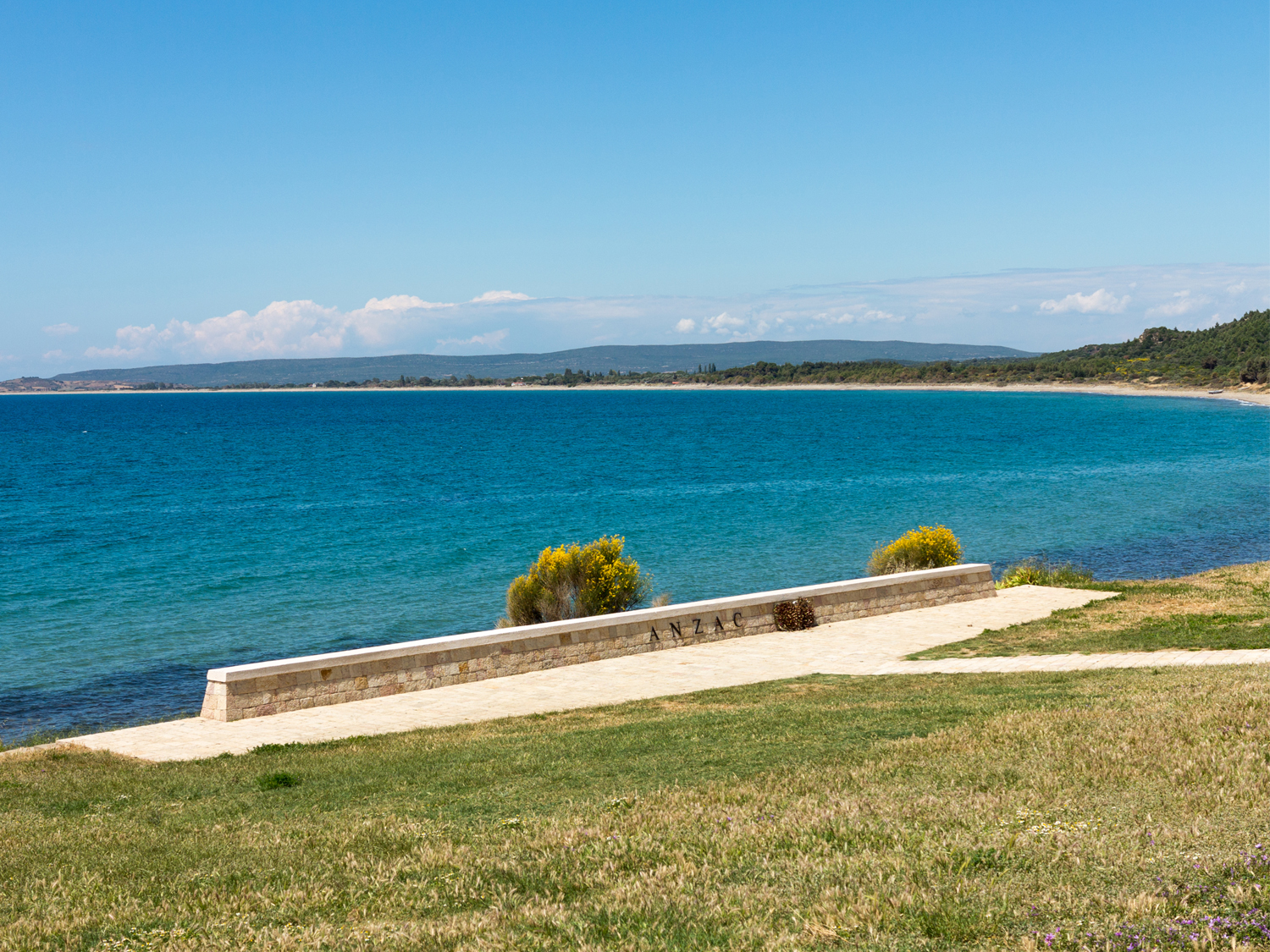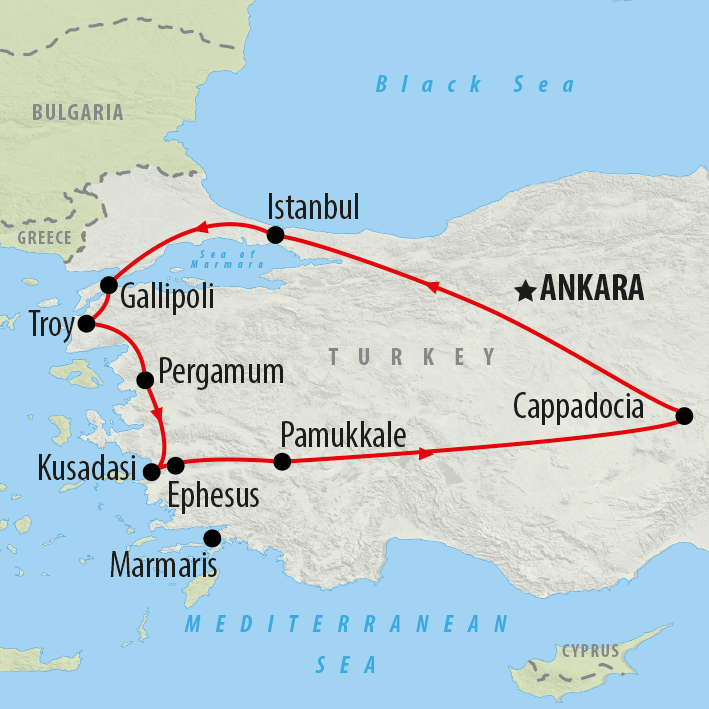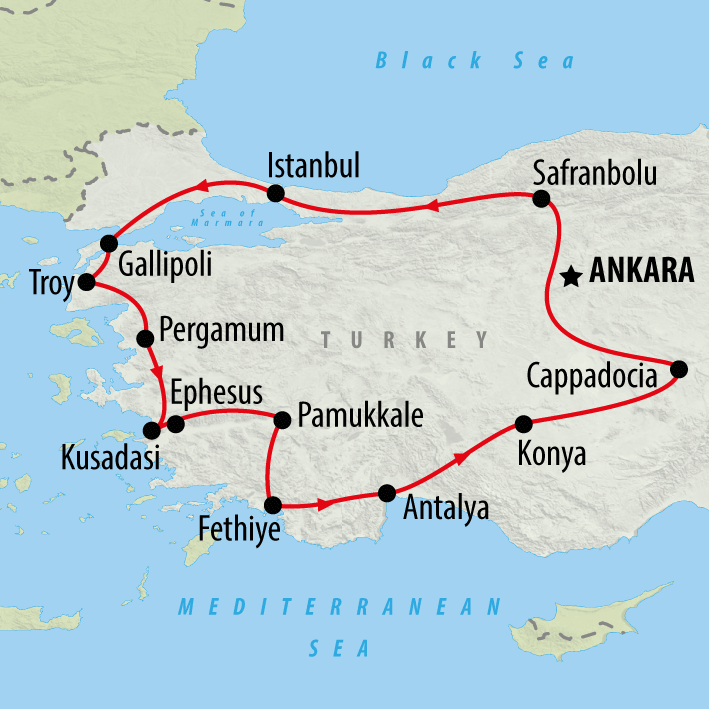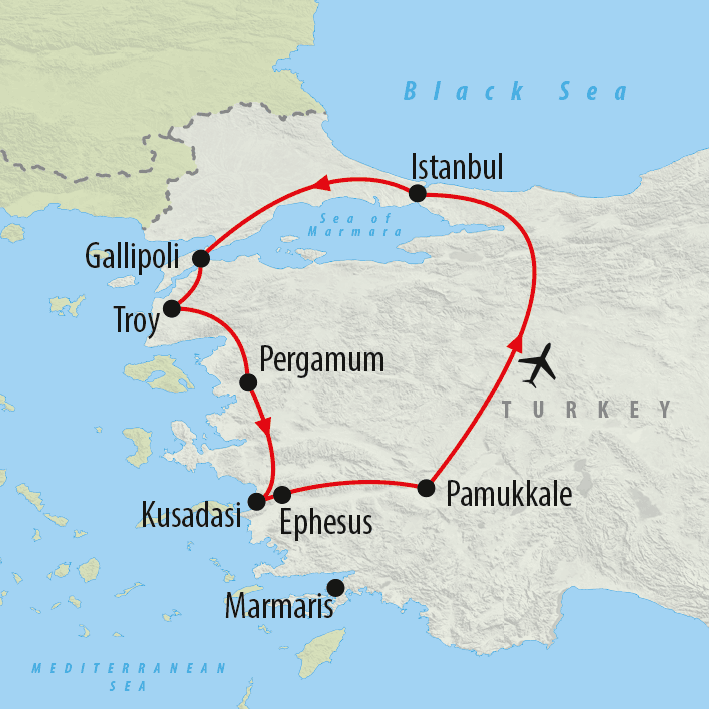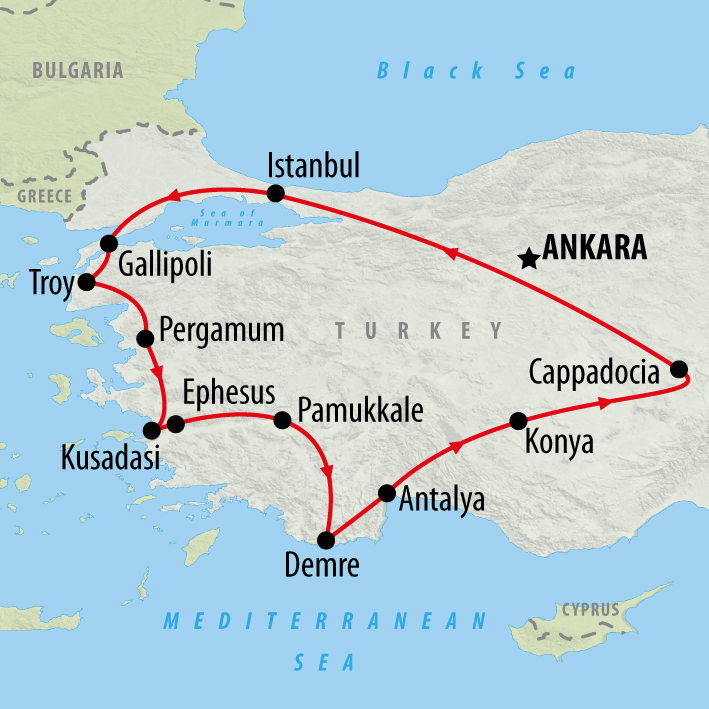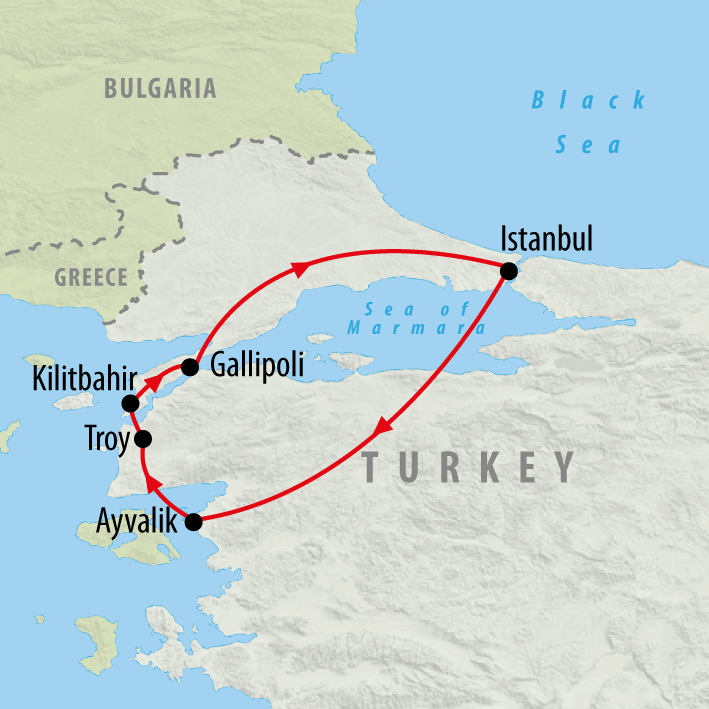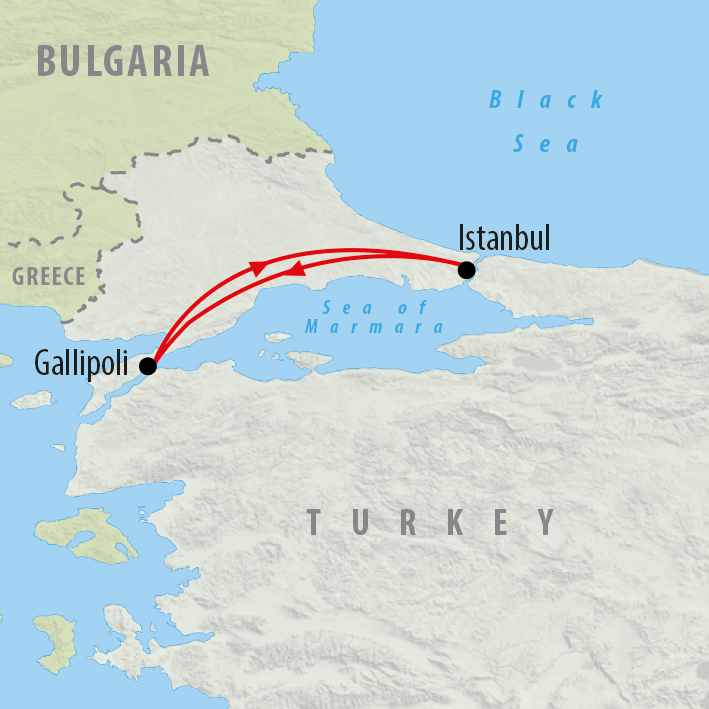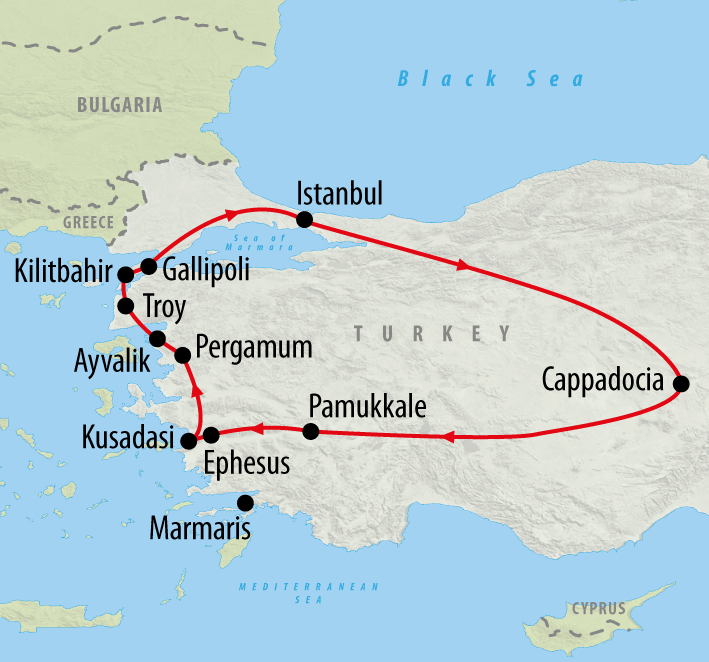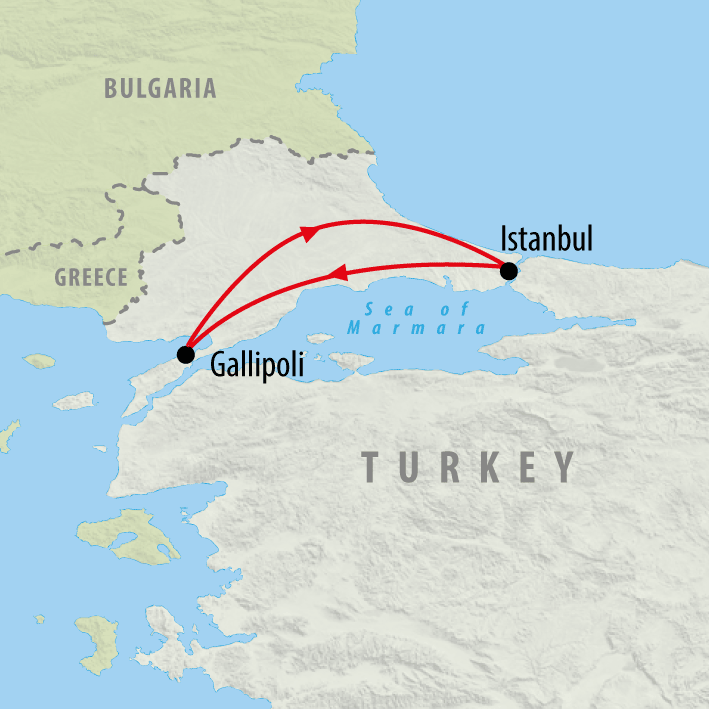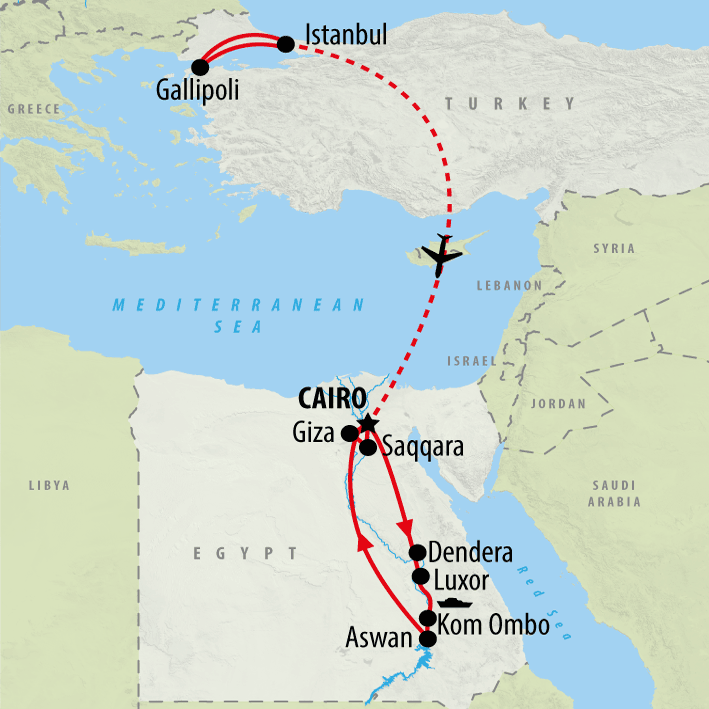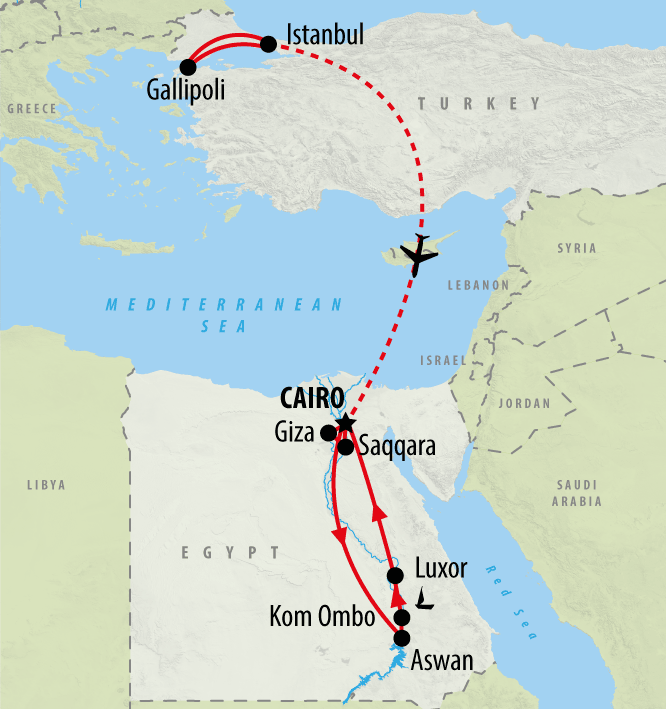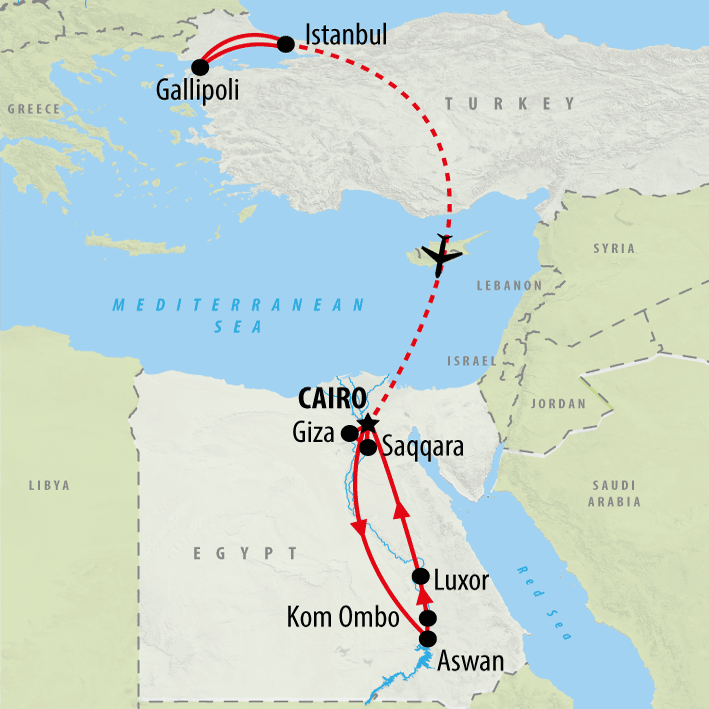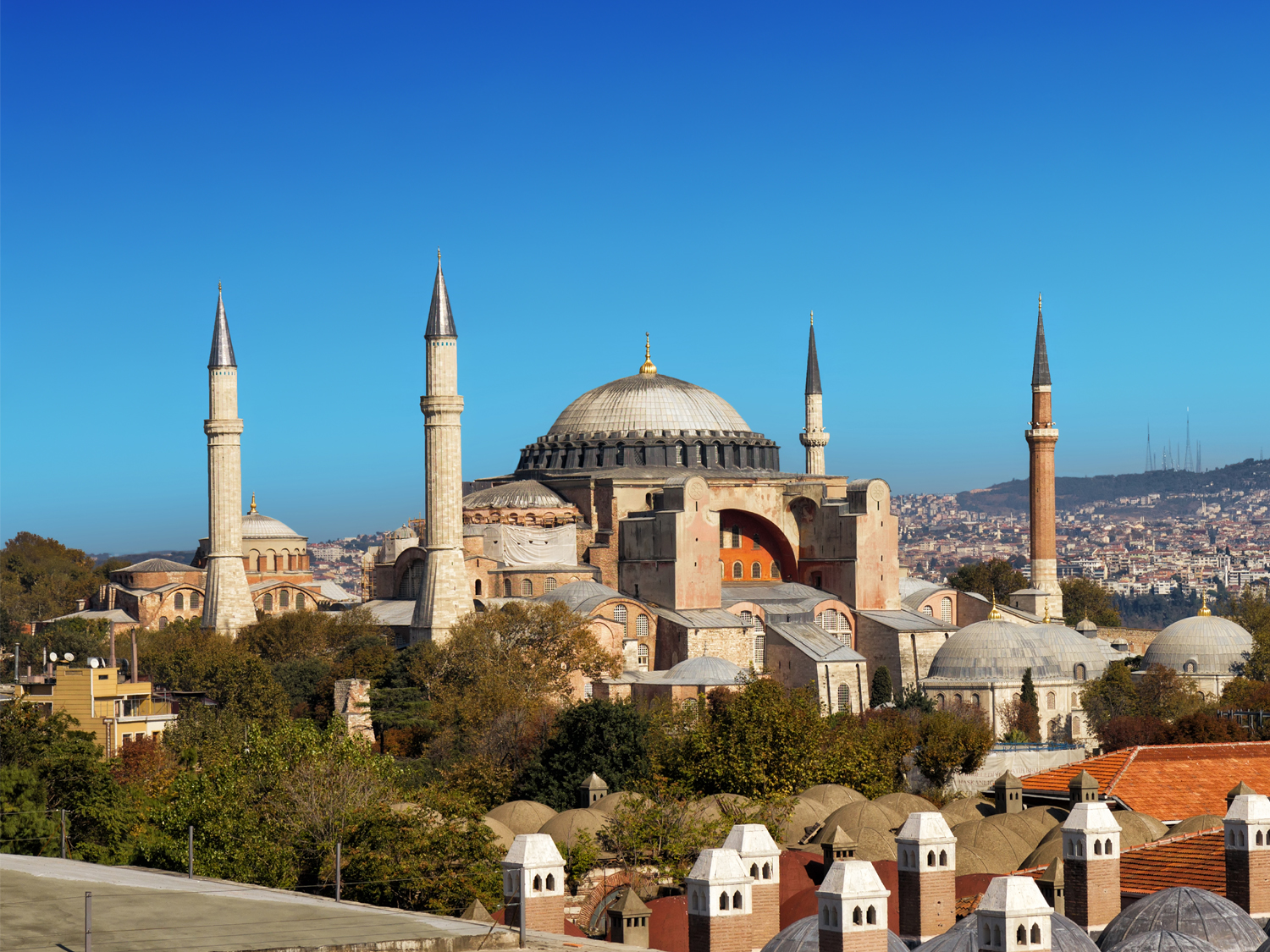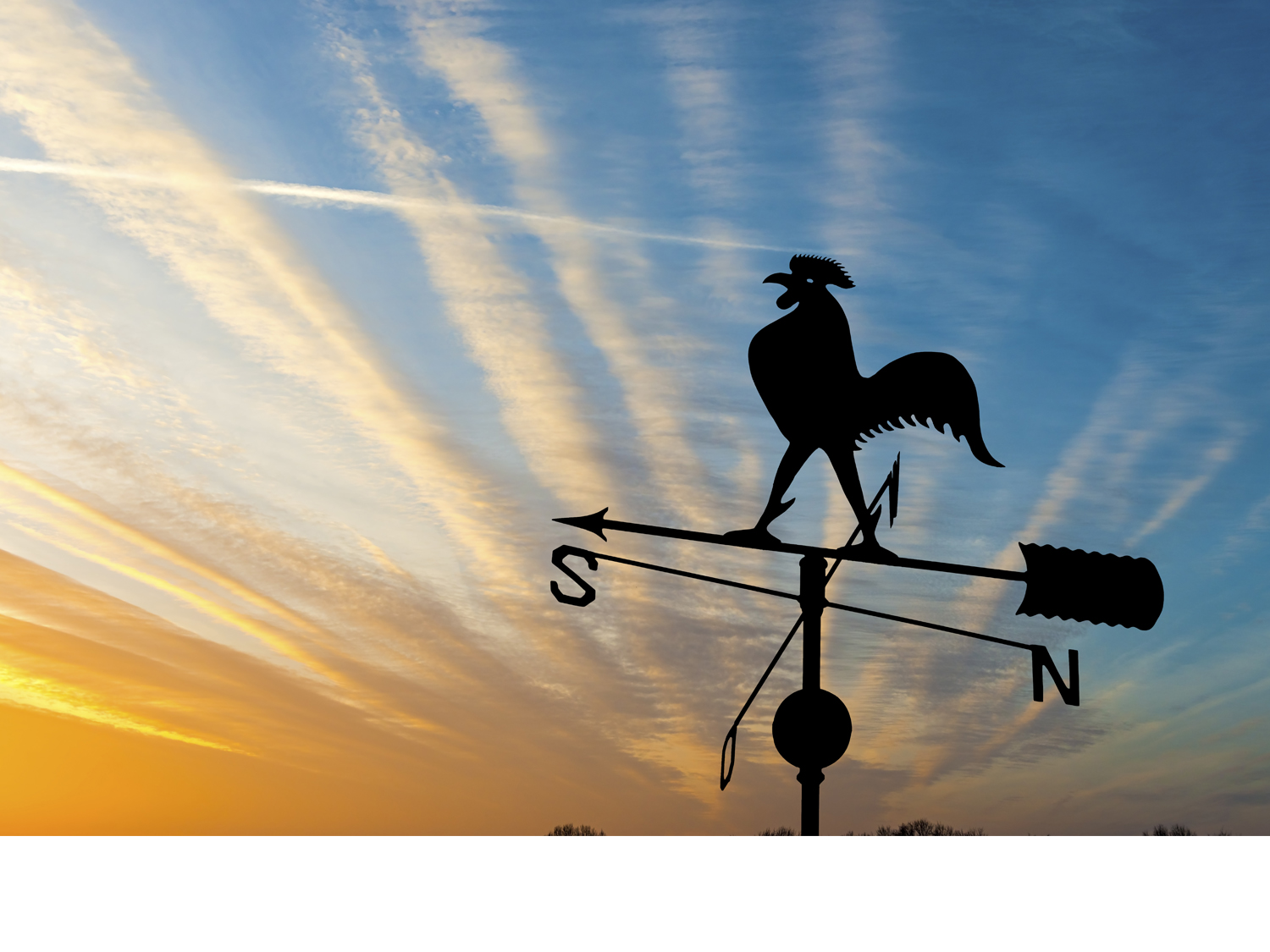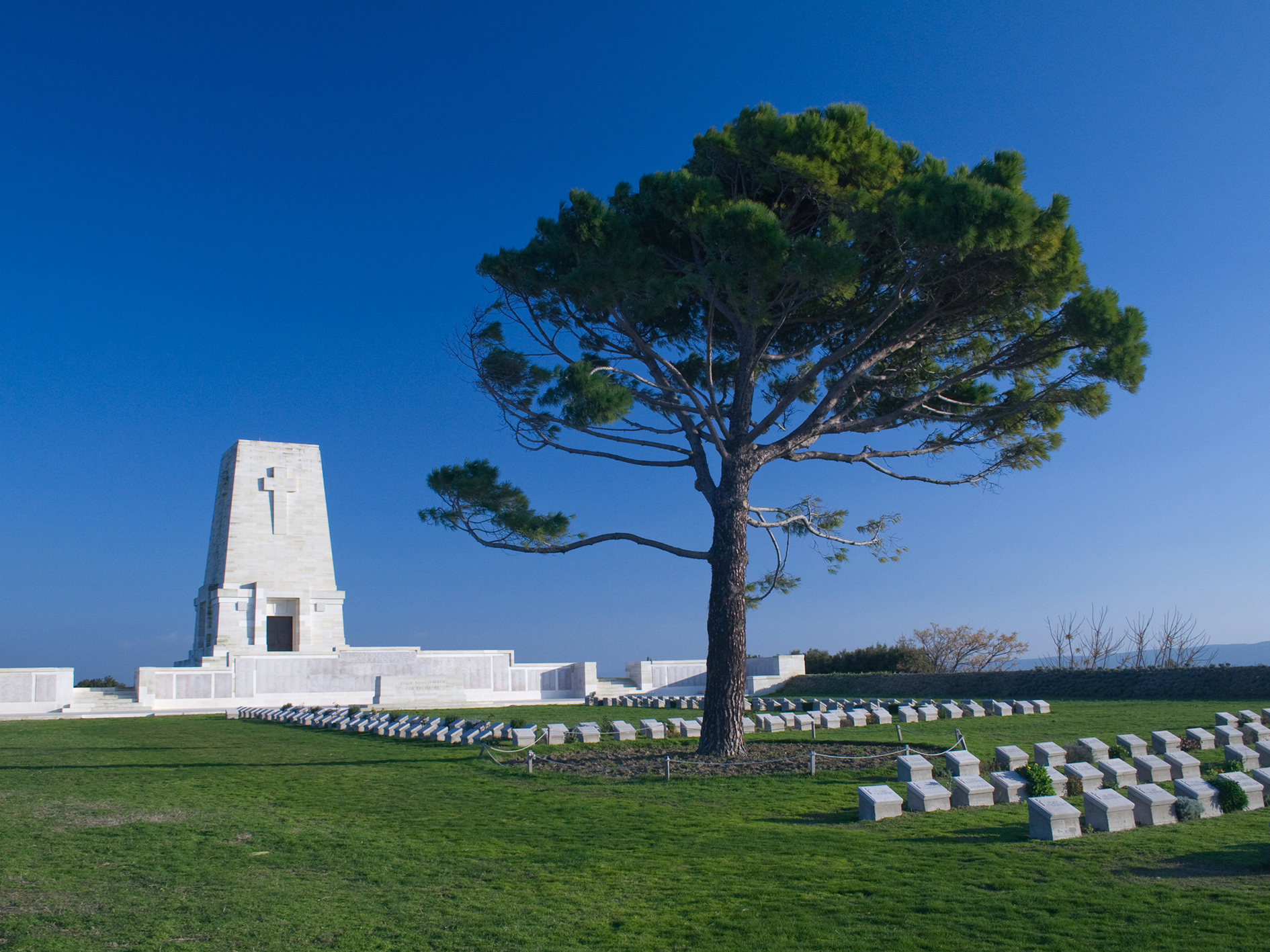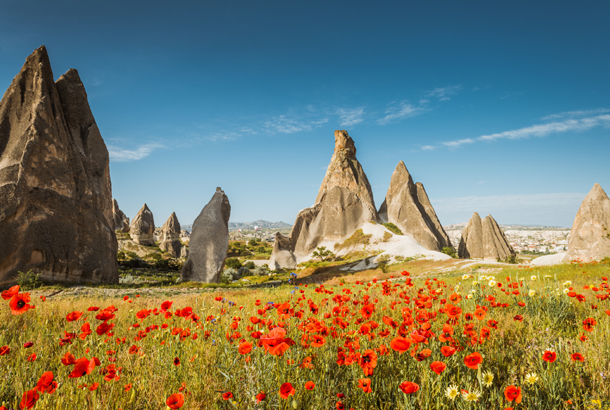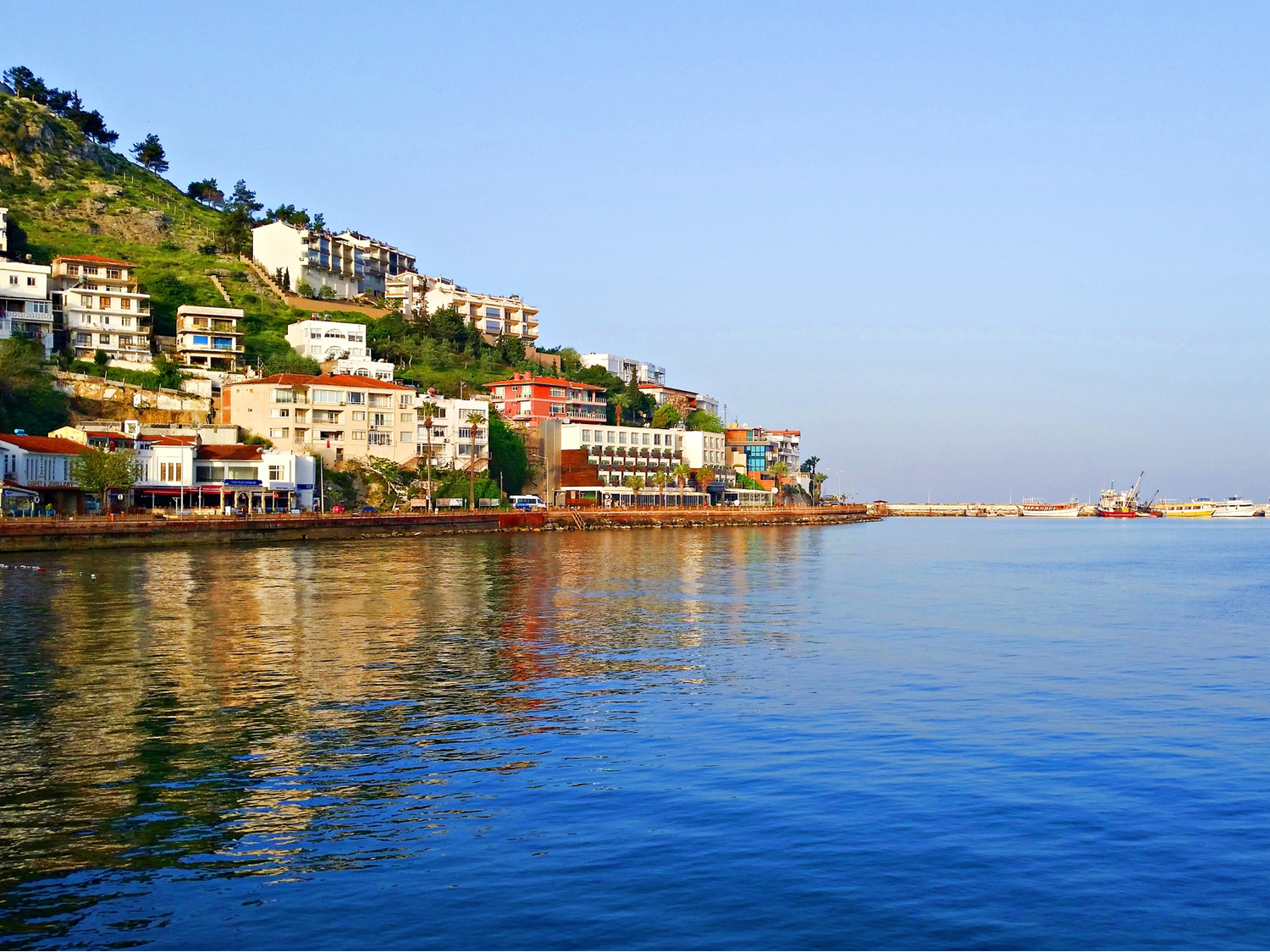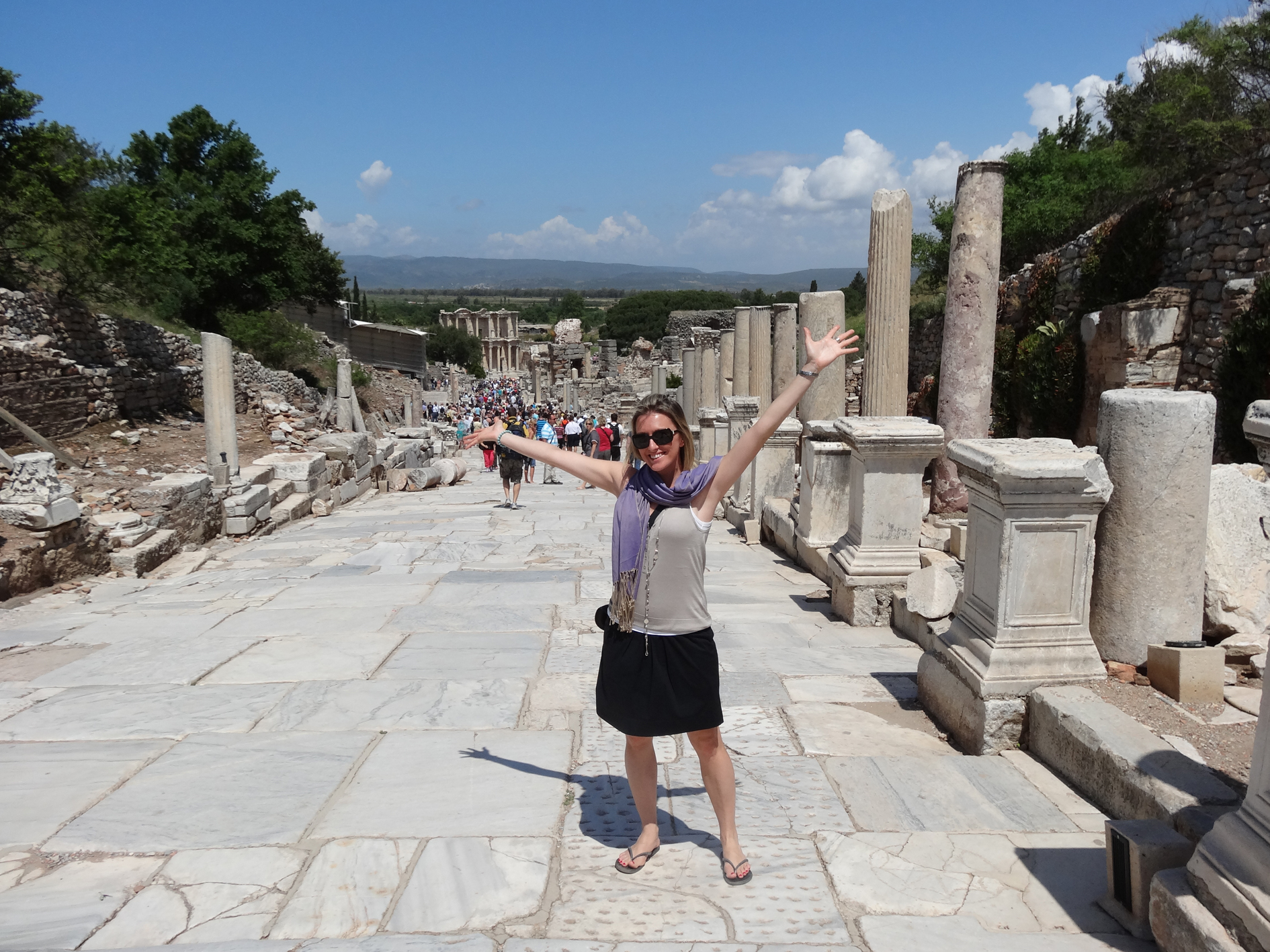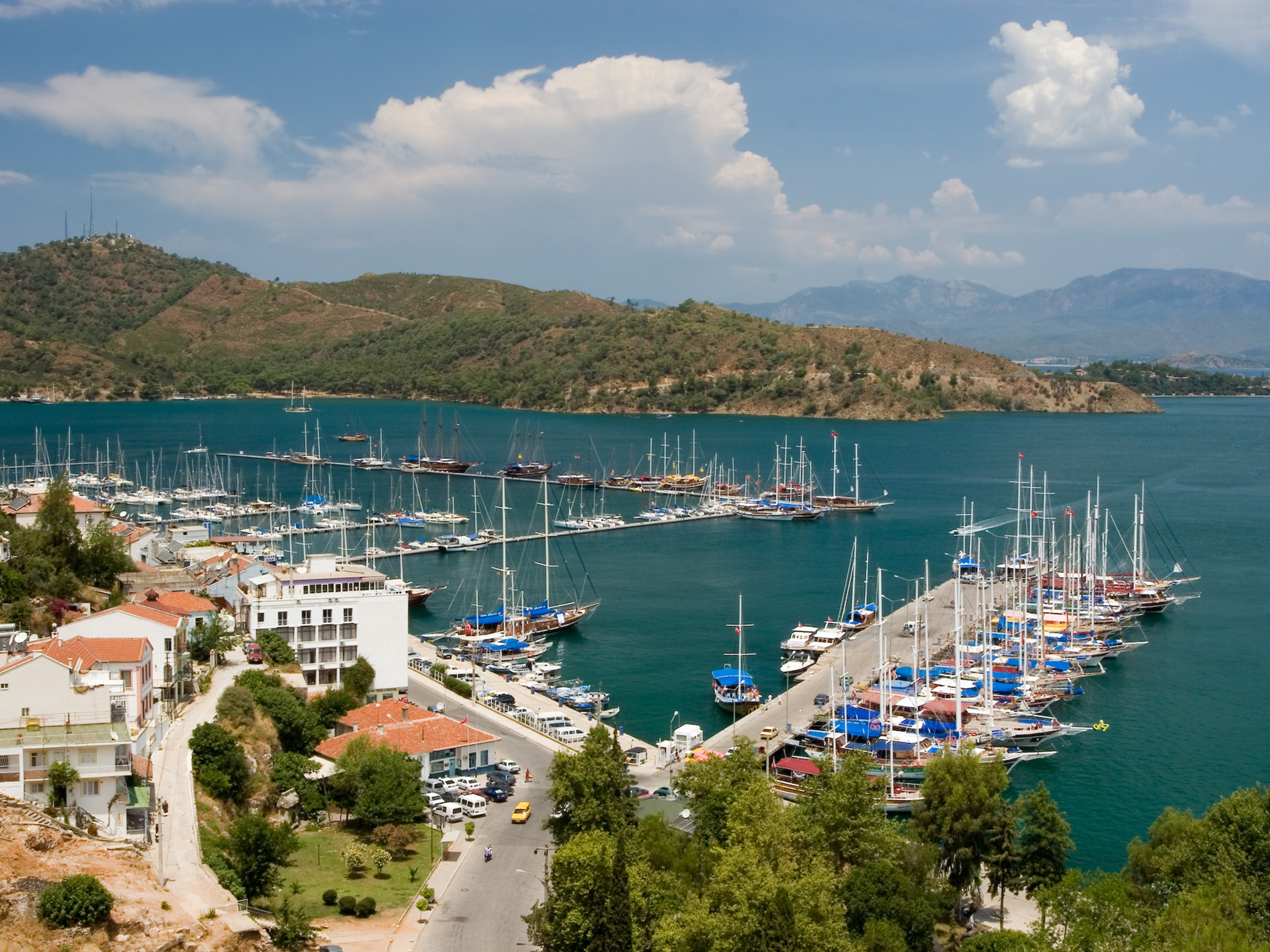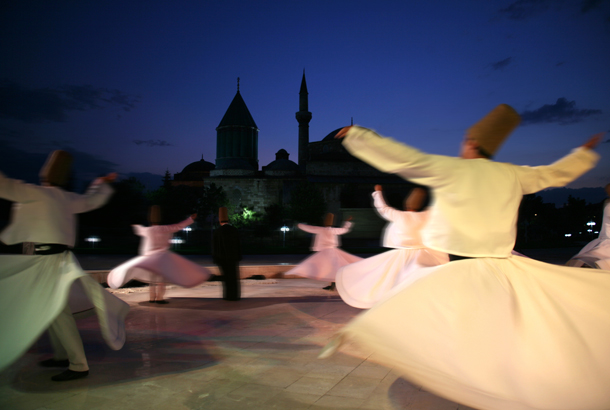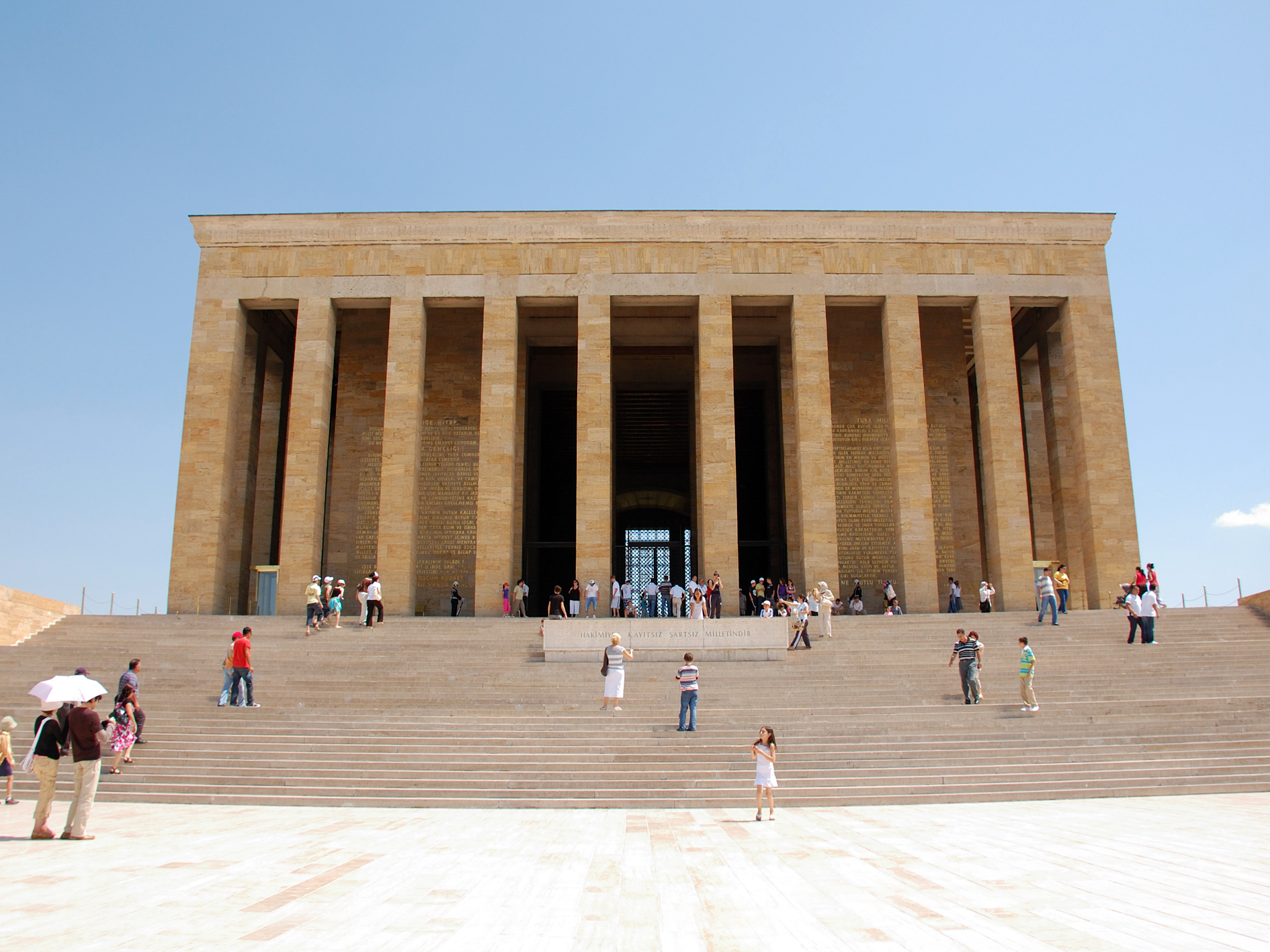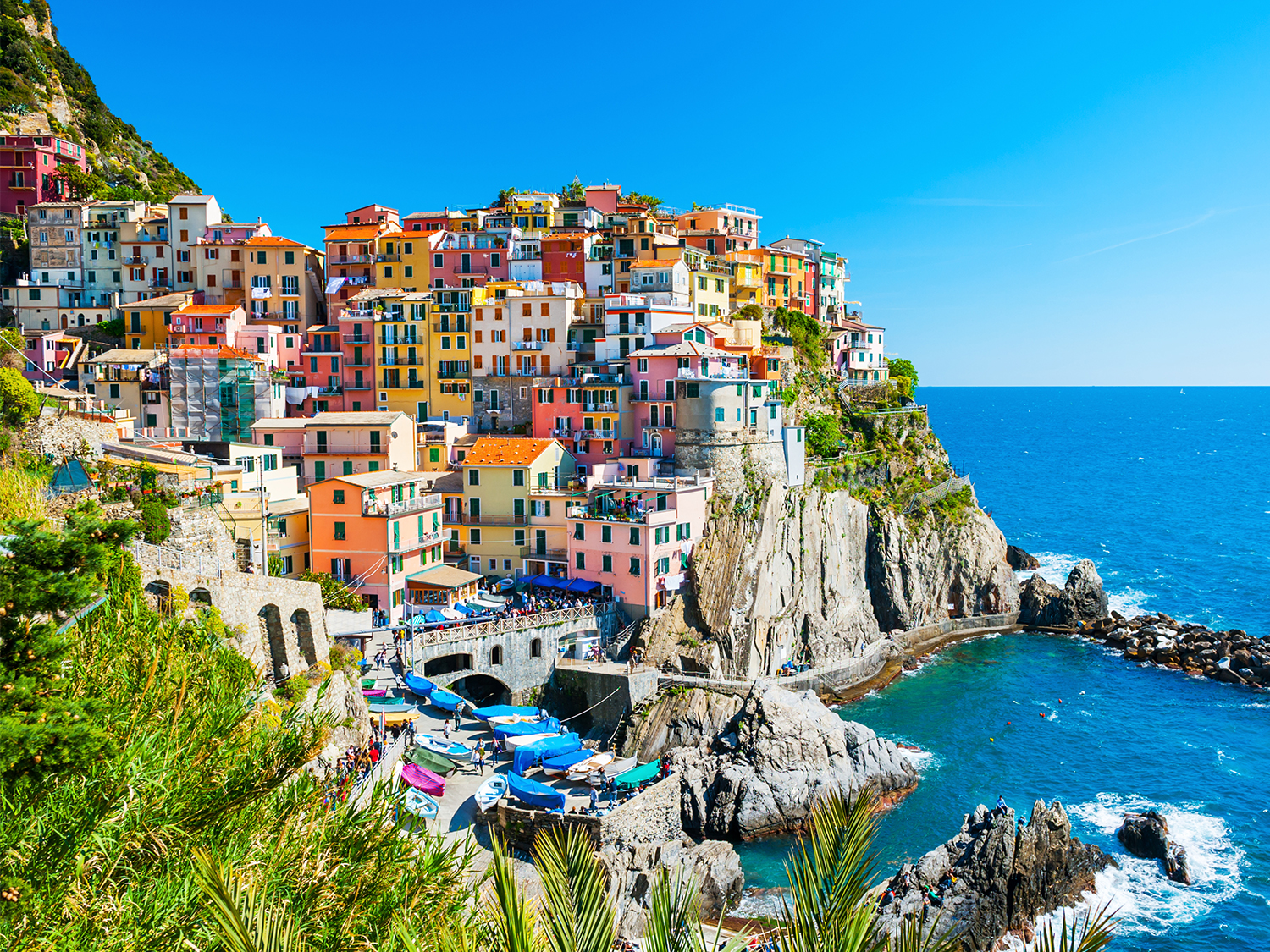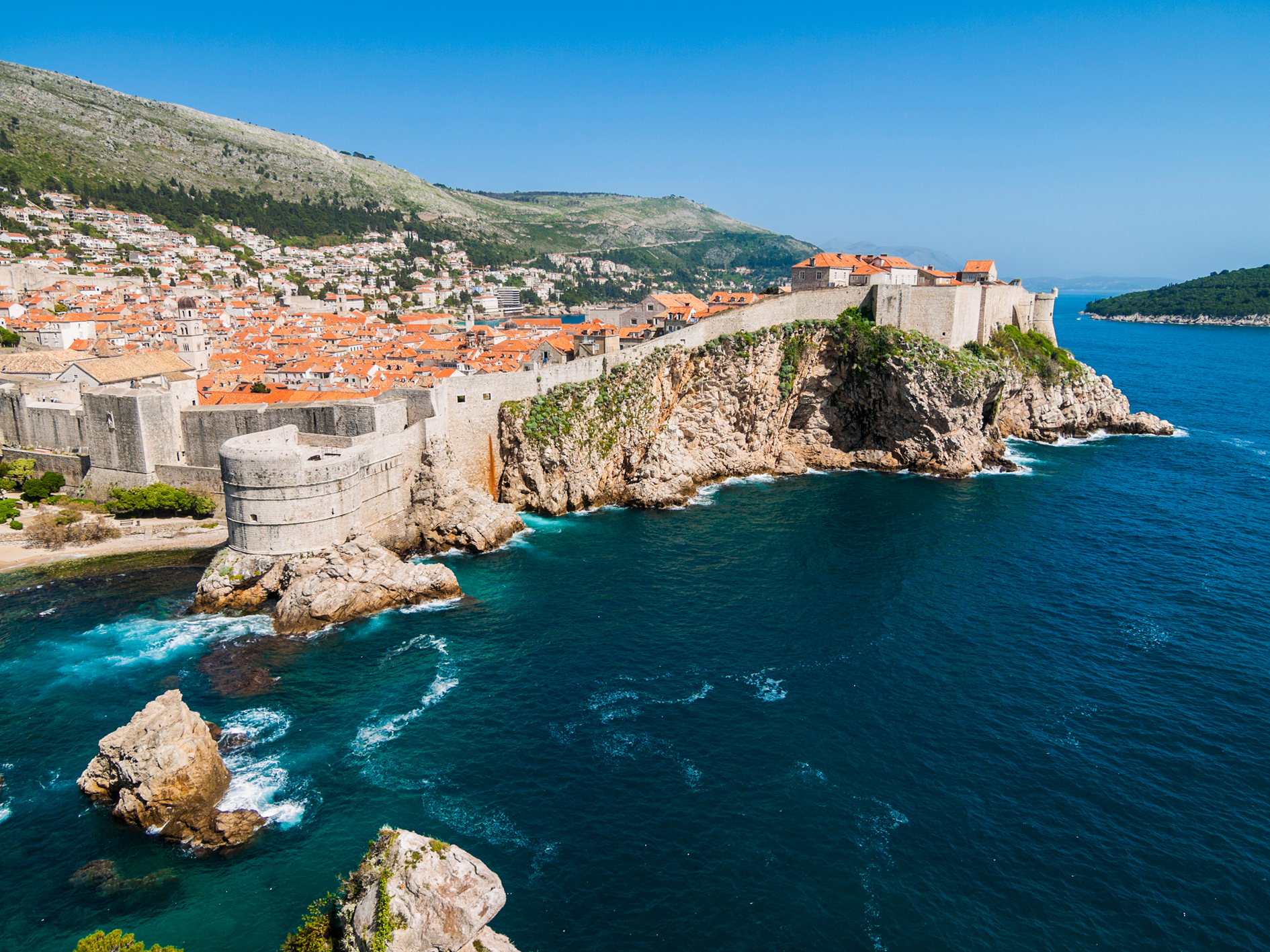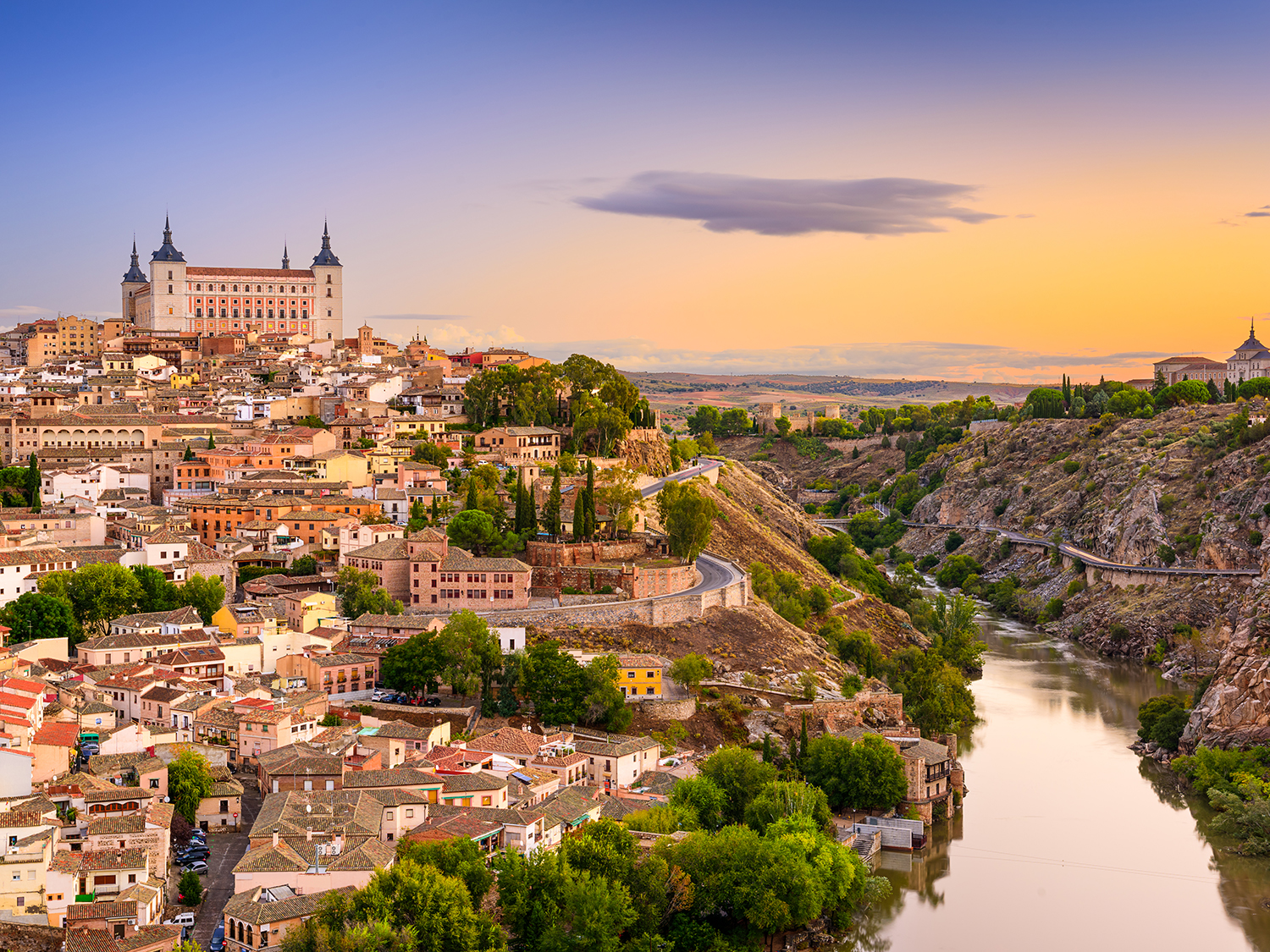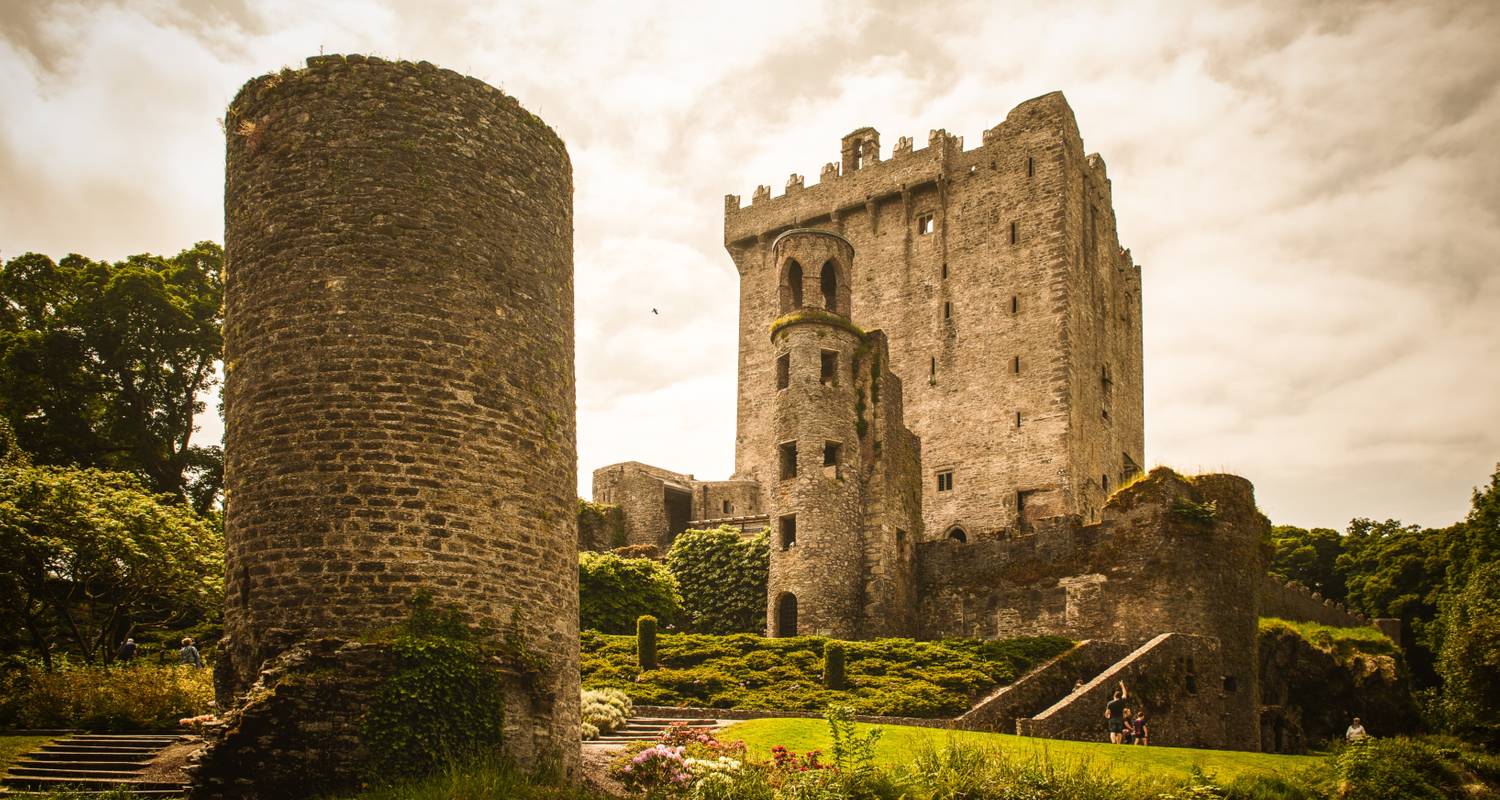Tours of Gallipoli and ANZAC CoveGuided Tours honoring sacrifice and embracing legacy
About Gallipoli and ANZAC Cove
The Gallipoli peninsula is in the southern part of East Thrace in sunny Turkey. With the Aegean Sea to the west and the Dardanelles to the east. In ancient times the Gallipoli peninsula was home to a number of important cities and famous for its wheat production. Today, however, the peninsula is known for its role in World War I where the Gallipoli Campaign took place. On the 25th of April 1915 Allied troops landed on Gallipoli on what is now known as ANZAC day. The name ANZAC day comes from the Australian and New Zealand armies that played a crucial role in the campaign. The Peninsular is now the resting place of many solders with 31 war cemeteries that contain around 22,000 graves though it has only been possible to identify some 9,000 of these. There are a further 27,000 remembered in unidentified graves and on memorials. Every year thousands flock to Gallipoli for the ANZAC day memorial service.
Tours to Gallipoli and ANZAC Cove
Embark on a poignant journey through history with our tours to Gallipoli and ANZAC Cove. Learn the history of the Gallipoli campaign and pay your respects to those that lost their lives bin World War I. Whether you're retracing the footsteps of ancestors or seeking a deeper understanding of the ANZAC legacy, our tours offer a deeply moving experience that honours the bravery and camaraderie of those who served.
ANZAC Day special event tours
As well as visiting Gallipoli on many of our regular Turkey group tours, our dedicated ANZAC Day tours depart once per year to coincide with the ANZAC Day Dawn Service, where we pay respect to fallen heroes from the Gallipoli campaign of WWI.
What to expect when visiting Gallipoli and ANZAC Cove
The shores of Gallipoli offer visitors a poignant experience. Stepping onto the rugged terrain of Gallipoli Peninsula, you'll be transported back to the harrowing days of World War I, where the ANZAC forces, alongside British and French troops, battled against the Ottoman Empire. With war memorials scattered around the landscape each telling a story of courage, sacrifice, and resilience. Witness the serene beauty of ANZAC Cove, where thousands of soldiers made their fateful landing. The beauty of the calming waters and lush greenery mixes with the solemn history of the land, creating a deeply poignant experience.
Where to go in Gallipoli
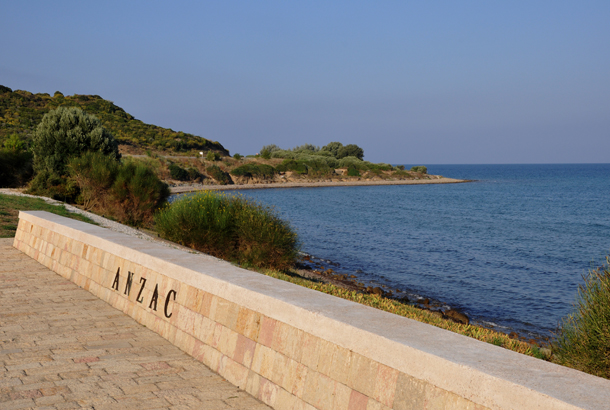
The ANZAC Cove
The spot where in 1915 Allied troops landed on Gallipoli to face the Ottoman forces. The cove holds great significance to Australians and New Zealanders whose ancestors set up their main base there during the Gallipoli campaign. The bravery and sacrifice of the of the ANZAC forces can be felt thought the cove. Surrounded by rugged cliffs and tranquil waters, the cove provides a serene backdrop for reflection and remembrance.
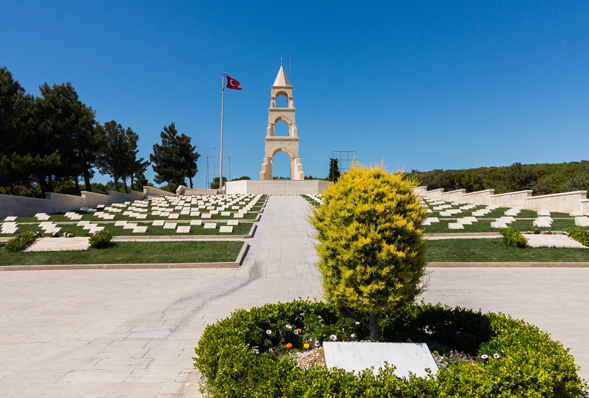
Gallipoli National Park
This memorial site covers over 33,000 hectares and is a national park dedicated to those who died in the battle of Gallipoli. The park consists of statues, memorials and cemeteries all dedicated to the soldiers of World War I. Walking around the park offers a solemn experience full of reflection, the park is a wonderful experience for the ancestors of those who lost their lives in Gallipoli. The park also acts as the site for the yearly memorial on ANZAC day where many Australians and New Zealanders flock to pay their respects to the ANZAC troops who fought in Gallipoli.
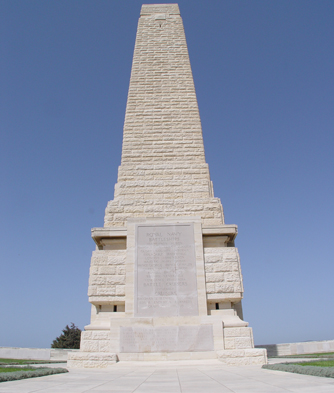
Helles Memorial
At the tip of the Gallipoli peninsular overlooking the Dardanelles the Helles Memorial stands the main commonwealth battle memorial for the Gallipoli campaign. The memorial features a 98 ft tall obelisk that stands in the centre dedicated the soldiers of World War I. The Helles Memorial ensures a deeply moving and unforgettable experience.
Frequently asked questionsFrequently Asked Questions
What is the significance of ANZAC Day?
ANZAC Day, observed on April 25th each year, commemorates the landing of Australian and New Zealand troops (Anzacs) at Gallipoli in 1915. It has since evolved into a day of remembrance for all Australians and New Zealanders who served and died in all wars, conflicts, and peacekeeping operations.
What can visitors expect to see and do during a visit to Gallipoli?
Visitors to Gallipoli can explore the various battlefields, trenches, and memorials scattered across the peninsula. Guided tours provide insights into the military strategies, personal stories of soldiers, and the historical significance of the campaign. Additionally, visitors can pay their respects at the numerous cemeteries and attend commemorative events, especially on ANZAC Day.
What were the main objectives of the Gallipoli campaign?
The primary objective of the Gallipoli campaign, launched by Allied forces during World War I, was to secure a sea route to Russia through the Dardanelles, ultimately to aid the Russian Empire against the Central Powers.
When should you Visit Gallipoli and ANZAC Cove?
The best time to visit the Gallipoli peninsular is during ANZAC day, which takes place on April 25th every year. When visiting during the ANZAC day period you can visit commemorative services that are held at the memorial services amongst other acts of respect to the people who lost their lives at Gallipoli.
Conclusion
A visit to Gallipoli and ANZAC cove is one of reflection. The beautiful setting of the rugged cliffs and calming sea are mixed with the weight of history. Standing amidst the solemn memorials and silent graves, we are reminded of the sacrifices made by those who came before us, and the legacy of courage, resilience, and comradeship that defines the ANZAC spirit. A visit to Gallipoli and ANZAC cove is a deeply moving experience that should be felt by the ancestors of these great heroes as well as those who owe their countries to the brave fighters who set foot on Gallipoli back in 1915.
Turkey travel guides
Highlights of Turkey
The kind-hearted hospitality of the locals is unlike anywhere else. Whether you're being offered a cup of traditional Turkish tea or chatting about local life and Turkish culture, you'll leave with the fondest memories. And that's not the only thing that stands out about our Turkey trips. From Istanbul's Blue Mosque to the underground cities of Cappadocia, here are some of the country's main highlights, and places you simply can't leave Turkey without visiting.
